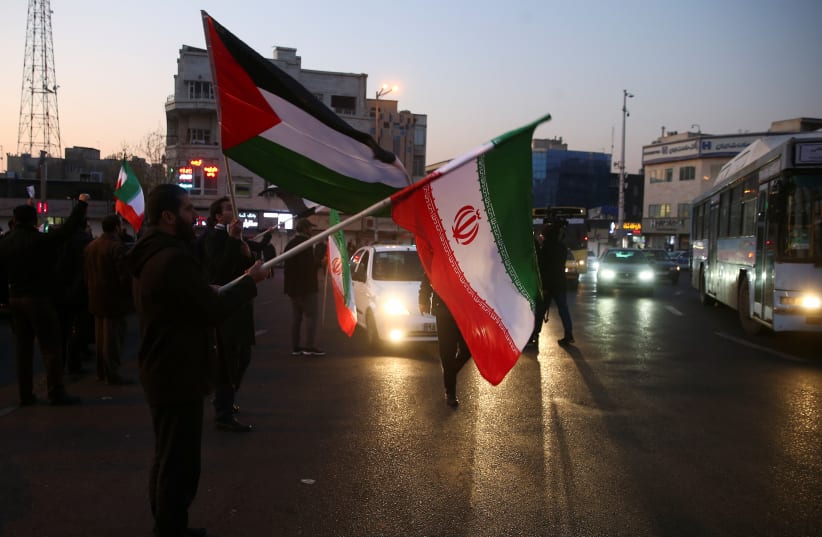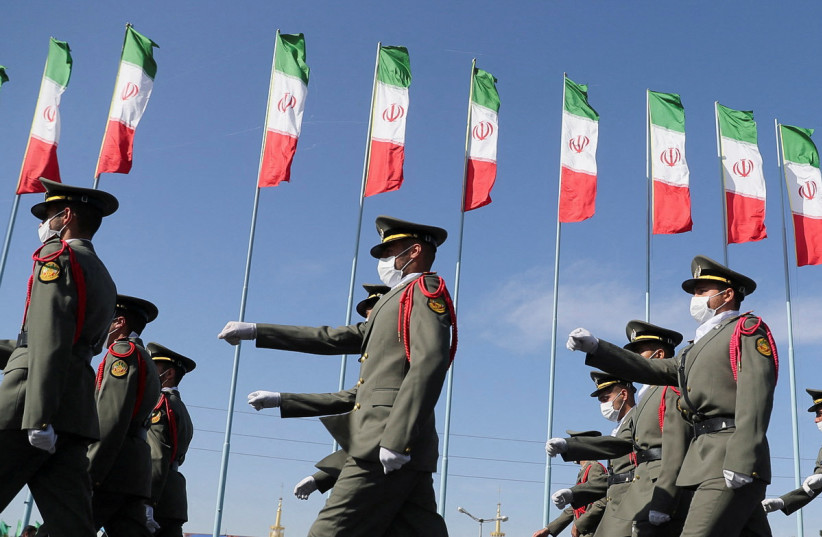Operation Shield and Arrow may be the first test for Iran’s ‘unity of fronts’ project, which is designed to ring Israel with threats and cause Israel to collapse internally. Iran has been working on this project for years but has recently increased its messaging about how it believes Israel’s internal political squabbles make Israel a ripe target.Iran’s messaging in this regard includes claims that Iran will continue to work on the “unity” of various proxies and groups it works with.
In Tehran’s view, it has achieved great success in Syria, helping the Syrian regime normalize with the Arab League. Iran sent its president to Syria recently. Iran has also continued to transfer arms to Syria via Aleppo in the wake of the February earthquake. Iran has also continued to operationalize groups and threats in Syria. It flew a drone into Israeli airspace in early April. It also encouraged the small Palestinian group Liwa al-Quds to fire rockets at Israel over Passover.
Iran has also worked to increase the terror infrastructure of Hamas and Palestinian Islamic Jihad. A recent report at the Post noted that Hamas could threaten to stage a coup in the West Bank. Iran believes it can transfer illegal weapons to the West Bank to begin the process of taking advantage of any situation in which the Palestinian Authority Security Forces are weakened.
It has supported the flooding of Jenin and Nablus with weapons, including numerous M-4 and M-16 style rifles now in the hands of gangs, armed groups and terrorists.
Iran is also in the process of transferring resources from backing the Houthis in Yemen to backing groups in Syria and Iraq. Iran wants the US to leave Syria and Iraq. It thus has a two-front operation in Syria, one against Israel, and one against the US. In Iraq, Iran works through the Hashd al-Shaabi, militant and terror groups linked to the IRGC such as the Nujaba group, Kataib Hezbollah and Asaib Ahl al-Haq.
Iran’s foreign minister also recently traveled to Lebanon where he went to southern Lebanon to view Israel from the border. Iran works in Lebanon with Hezbollah but it has also recently encouraged Hamas to fire rockets at Israel from Lebanon. Over the Passover holiday, Hamas fired 30 rockets at Israel. In addition, Iran has helped Hezbollah acquire precision-guided munitions and drones. It has heralded Hezbollah’s use of drones against offshore gas platforms. Iran also uses Hezbollah to control Lebanon’s presidential elections.
Iran’s overall goal, stated openly, is to unify various fronts against Israel. it brags about this goal. It calls this the “unity of the resistance fronts.” Iran believes Israel is afraid of escalation with Hezbollah. Towards that end Hezbollah enabled an infiltration in March of a man who planted an IED near Megiddo junction. That man was then neutralized by security forces. However, the incident was serious. Iran looks on at these incidents as important and wants to gauge Israel’s reaction.
'Unity of resistance'
Now Iran is watching closely Operation Shield and Arrow. Iran has many ways to use its unity of “resistance.” It can create tensions in Syria or Lebanon or the West Bank. It can also look further afield such as the Gulf of Oman where Iran uses drones to attack ships. Iran recently waylaid two tankers in areas near the Straits of Hormuz. This was not connected to Israel, but shows Iran’s capabilities.
Iran also wants Syria back in the Arab League so that it can cement its role there. It suspects that once Syria is back in the League then the League members will be more reticent to see airstrikes in Syria. Iran can then entrench at will. However, Iran also knows that there were recent airstrikes ascribed by Jordan that targeted a drug dealer in southern Syria. The Arab states do not want Syria to be a chaos run by Iran. Therefore Tehran must tread carefully as it considers its next steps and how it wants to make moves relating to Israel’s operation.
In the past, Israel has conducted a number of similar operations to Shield and Arrow, such as House of Cards or Black Belt or Breaking Dawn. Israel has also carried out the long-term Break the Wave operation in the West Bank and also Northern Shield which was designed to pre-empt threats along the northern border.
In each case, Israel has tailor-made operations designed to counter Iran’s octopus-like threats. Last year Israel’s former Prime Minister even mentioned an “octopus doctrine” which was designed to confront Iran’s attempt to unify its fronts. In essence, then the deadly game of chess is afoot between Iran and Israel. Iran has to wonder whether it’s worth responding to the cutting off of several tentacles or whether it will wait.

